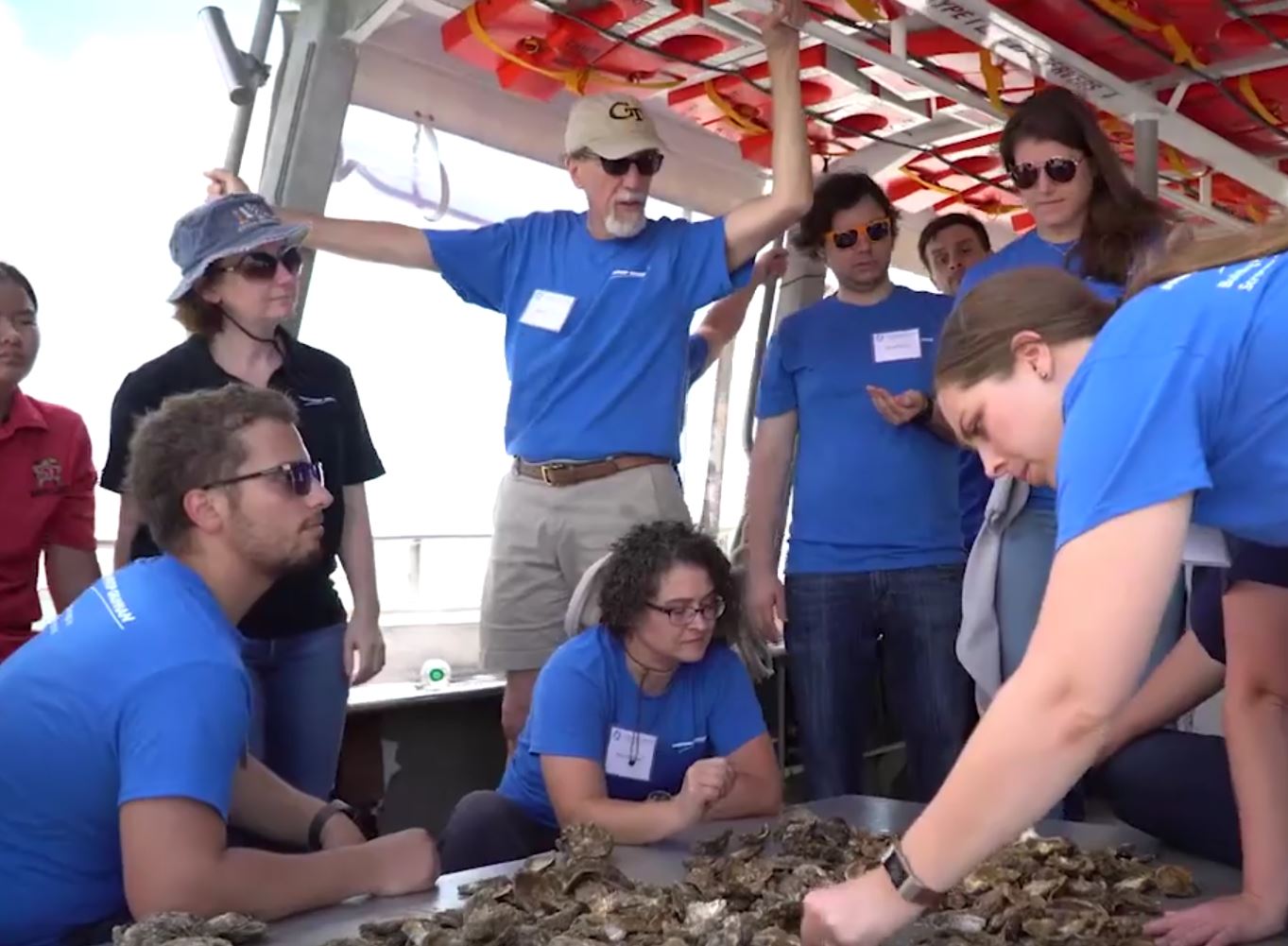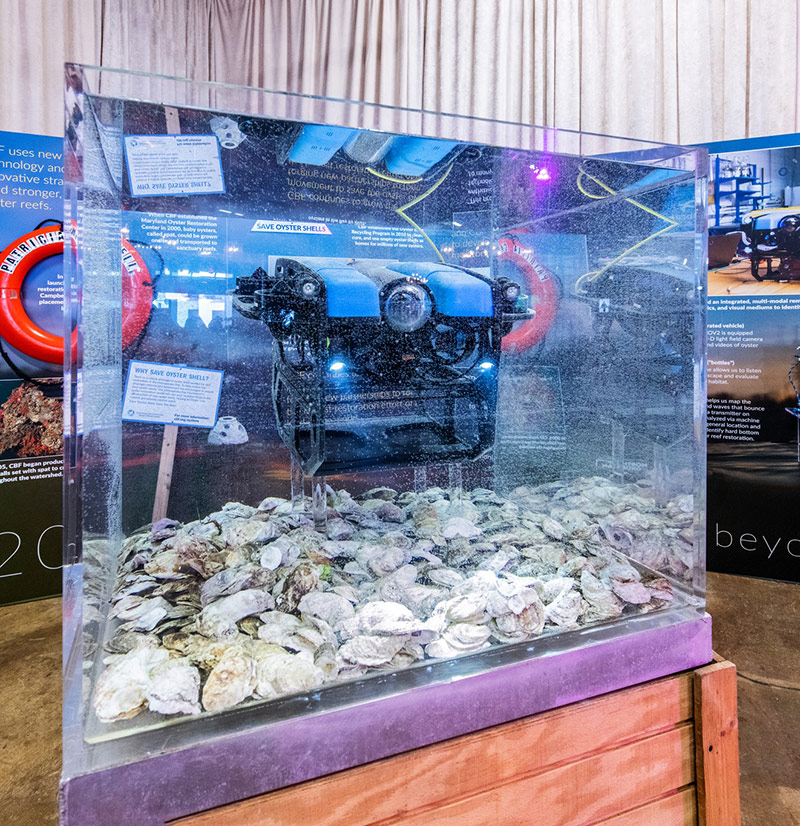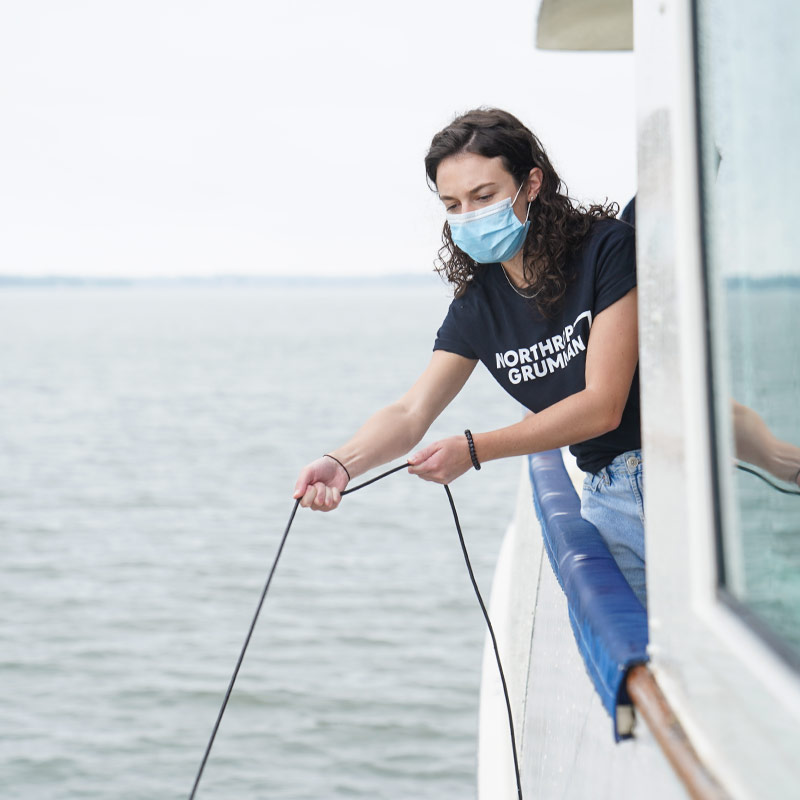Chesapeake Bay Oyster Monitoring
Northrop Grumman Innovates Remote Monitoring of Bay Oyster Reefs Through Environmental Partnership


Saving the Bay
Oyster restoration is key to the health of the Chesapeake Bay, as oysters are vital in helping clean water and restoring the bay's natural ecosystem.
Unfortunately, the bay oyster population has declined for over a century. In response, The Chesapeake Bay Foundation (CBF) supports a regional goal to plant 10 billion new oysters by 2025.
One of the primary challenges is remotely monitoring oyster reefs across the Chesapeake Bay. Only a fraction of reefs are monitored, and the CBF's current methods of gathering data are labor intensive and limited by weather and water conditions.
In partnership with the CBF, Northrop Grumman launched the Chesapeake Bay Oyster Monitoring Grand Challenge. Through the Challenge, employees developed technology solutions for remote oyster reef monitoring that leveraged the best of our remote sensing capabilities and applied them to low-cost commercial hardware in an effort to improve conservation programs.
Leveraging Technology to Save the Bay

Monitoring Capabilities
Requirements for monitoring included:
- Mapping and imaging oyster sanctuary reefs
- Collecting water chemistry data
- Obtaining health and development status data
- Providing actionable insights to the CBF on how to best deploy resources
Five teams were selected to develop and demonstrate sensor technologies. Those teams were then reorganized into two with a continued focus on developing and integrating the sensors onto vehicle platforms and demonstrating remote operation. The teams worked in parallel to field their concepts and delivered an operational capability to the CBF. The teams developed solutions that met the parameters of the CBF’s budget using:
- Acoustic monitoring
- SONAR
- LIDAR
- Surface and underwater remotely-operated vehicles
- Image processing
- Artificial Intelligence and Machine Learning

Developing Multi-Modal Remote Sensing Systems for Evaluating Reefs
- The ROV
This BlueRobotics BlueROV2 is equipped with a state-of-the-art 3-D light field camera providing clear images and videos of oyster reef and habitats.
- Acoustic Hydrophones “bottles”
This acoustic hydrophone allows us to listen to the oyster reef soundscape and evaluate the quality of the oyster habitat.
- Sonar Towfish
This towed sonar array helps us map the bottom by emitting sound waves that bounce off the seafloor back to a transmitter on the array. That data is then analyzed via machine learning to identify hard bottom suitable for oyster reef restoration.
Northrop Grumman is in the process of handing over the system to the CBF so they can continue to track oyster populations and the health of oyster reefs in the bay.

Career Opportunities
Are you interested in technology and innovation? We are too.
Check out Northrop Grumman career opportunities and consider joining our team.